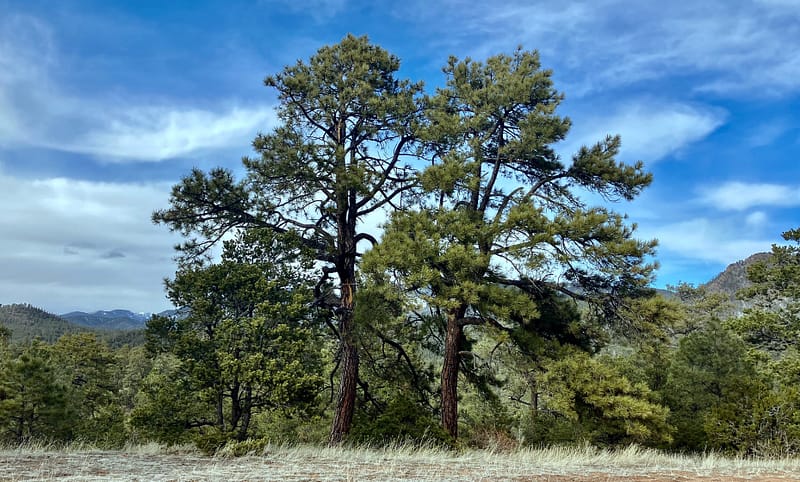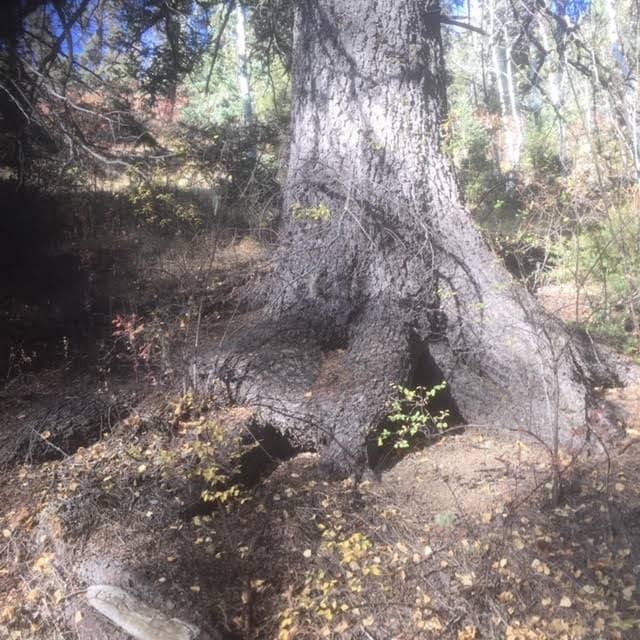
Do Trees have Consciousness? And the implications for forest management.
by The Forest Advocate Mar 30, 2023
Underlying forest management planning and decisions are considerations about what a forest really is. What are trees? Can they be reasonably considered to have consciousness? If there is any possibility trees have consciousness of any sort, then it brings up questions about what is justifiable to do to them in our efforts to “manage” forests.
These questions may also underlie some of the disparity of perspective regarding forest “fuels treatments.”
One perspective is that trees are alive, but not conscious in any way, and that our duty is to simply manage the forest in order to reduce the occurrence of stand-replacing fire (very high severity fire), and to protect communities and natural, economic and recreational resources. The focus is primarily on forests as systems, and strives to preserve species, overall ecological structure and the forest’s ability to withstand impacts.
An alternative perspective is that forests, and trees, are truly alive, meaning that there is a deep intrinsic value to each organism in the forest, as well as to the forest as a whole. This perspective acknowledges and respects the many individual life forms in a forest, which also exist as communities, and in some sense as a superorganism. When you consider individual lives, one becomes more aware that forest management actions, such as those that remove habitat from wildlife, may cause suffering. This extends to the plant kingdom as well. However, this perspective also recognizes the need to protect human communities and infrastructure.
Whether trees have consciousness, or not, is an integral aspect of these differing land management perspectives. So do trees, and other plants, have consciousness? This is not just a philosophical question, but also a scientific one. And it is dependent on how one defines consciousness and cognition, and how we consider those definitions.
“Consciousness and cognition in plants” by Miguel Segundo-Ortin and Paco Calvo is an overview of studies that address the issue of whether consciousness and cognition extend into the plant kingdom, along with links to the studies. The authors state:
Unlike animal behavior, behavior in plants is traditionally assumed to be completely determined either genetically or environmentally. Under this assumption, plants are usually considered to be noncognitive organisms. This view nonetheless clashes with a growing body of empirical research that shows that many sophisticated cognitive capabilities traditionally assumed to be exclusive to animals are exhibited by plants too. Yet, if plants can be considered cognitive, even in a minimal sense, can they also be considered conscious? …
We invite the reader to consider the idea that if consciousness boils down to some form of biological adaptation, we should not exclude a priori the possibility that plants have evolved their own phenomenal experience of the world.
The authors provide research evidence concerning plant cognition, which they define as encompassing behavioral patterns that are “adaptive, flexible, anticipatory, and goal-directed.” Evidence is provided that plants communicate via airborne biogenic volatile organic compounds (VOCs). Also that they can distinguish kin from non-kin, that they can choose between alternative courses of action, such as growth direction and rate, and that they can be risk avoidant. The authors provide an argument that these behavioral patterns indicate that plants may be sentient.
The work of Dr. Suzanne Simard concerning tree consciousness and cognition has become widely known. She observed a connection among trees in her childhood days, living near a forest in British Columbia. Motivated by her perceptions, she undertook scientific studies that can be interpreted to mean that trees are social beings, because they share nutrients and communicate through underground fungal networks. For example, they can warn each other of impending dangers via chemical signals.
Scientific American published an article about Dr. Simard’s research, that included an interview, “‘Mother Trees’ Are Intelligent: They Learn and Remember.” In the interview, Dr. Simard was asked — “Your use of the word “intelligent” to describe trees is controversial. But it seems like you are making an even more radical assertion—that there is an “intelligence” in the ecosystem as a whole.” Her reply was:
You used the word “controversial.” That comes from me using a human term to describe a highly evolved system that works, that actually has structures that are very similar to our brain. They are not brains, yet they have all the characteristics of intelligence: the behaviors, the responses, the perceptions, the learning, the archiving of memory. And what is being sent through those networks are [chemicals] like glutamate, which is an amino acid that also serves as a neurotransmitter in our brain. I call the system “intelligent” because it is the most analogous word that I can find in the English language to describe what I am seeing.
Monica Gagliano, an Australian scientist and research associate professor in evolutionary ecology, has also focused on plant cognition. She has co-authored a number of papers and studies considering whether plants can learn, remember, and make choices. When asked in an interview whether an organism needs a brain or a central nervous system to perform these functions, which plants, including trees, do not possess, she responded:
Science is full of assumptions and presuppositions that we don’t question. But who said the brain and the neurons are essential for any form of intelligence or learning or cognition? Who decided that? And when I say neurons and brains are not required, it’s not to say they’re not important. For those organisms like ourselves and many animals who do have neurons and brains, it’s amazing. But if we look at the base of the animal kingdom, sponges don’t have neurons. They look like plants because when they’re adults, they settle on the bottom of the ocean and pretty much just sit there forever. Yet if you look at the sponge’s genome, they have the genetic code for the neural system. It’s almost like from an evolutionary perspective, they simply decided that developing a neural system was not useful. So they went a different way. Why would you invest that energy if you don’t need it? You can achieve the same task in different ways.
When we move outside of our human-centric way of understanding consciousness, and consider research that indicates that plants do have many sophisticated cognitive capabilities, then it becomes difficult to deny that plants may have consciousness and cognition, and may be sentient. Even using the term “fuels treatments,” becomes problematic, as trees are so much more than fuels.
The consideration of consciousness in trees and plants in relation to forest management needs to be balanced with the necessity to restore our forests to some extent. Our forests have been impacted heavily by human interventions including fire suppression, logging (including aggressive “thin from below”), too-frequent prescribed burning, grazing, building of too many forest roads, off-road vehicles, chemicals such as herbicides, fire accelerants and fire suppressants, and air pollution.
Instead of applying reductionist principles and methodologies onto the forest, it can help to adopt an attitude of working with the forest’s natural processes, understanding that there may be some type of consciousness and cognition underlying these processes. We can help the forest to heal in its own way as much as possible, while providing some interventions where they may be needed.
Interventions can be as supportive and light-handed as possible, applied with respect for the life of/in the forest, and considered with the understanding that we do not fully know the “mind” of the forest. Given the growing research indicating that trees and plants may have consciousness and cognitive capabilities, until we have thoroughly resolved the question, it is reasonable to consider that many life forms of the forest may be sentient. Therefore, it’s imperative to first do no harm – that is harm in the bigger picture – sincerely balancing the costs and benefits. We must approach forest issues and management with the broadest, deepest and most holistic awareness possible.
Sarah Hyden

The Forest Advocate
Santa Fe, New Mexico
